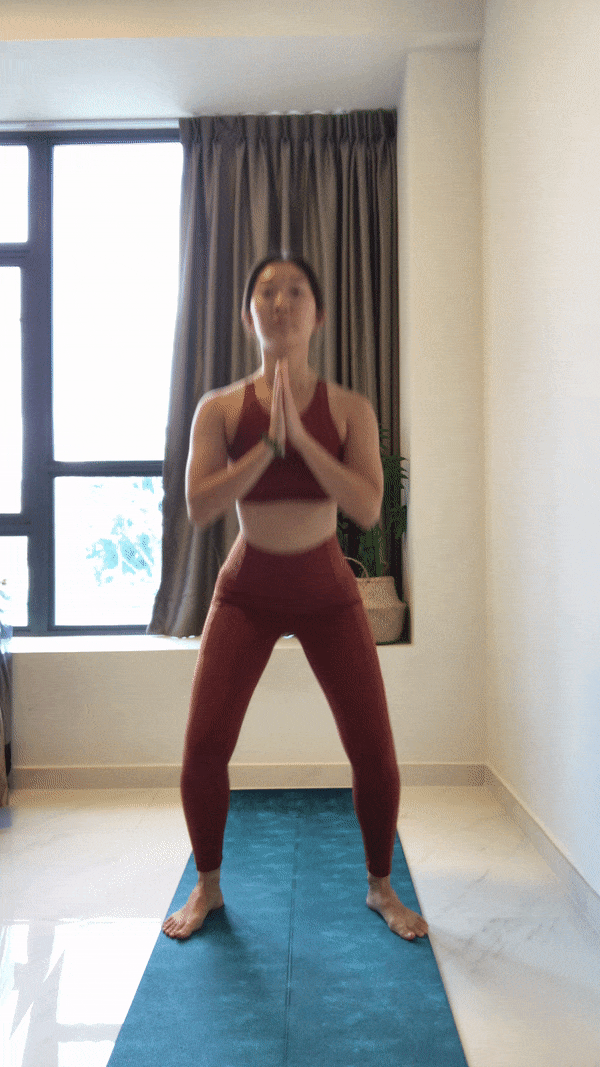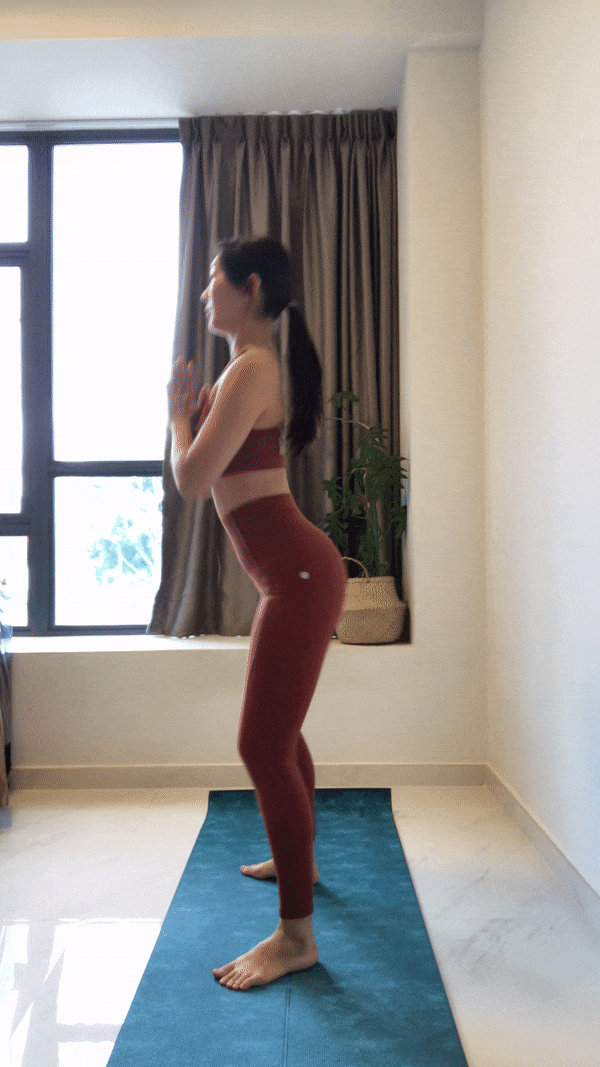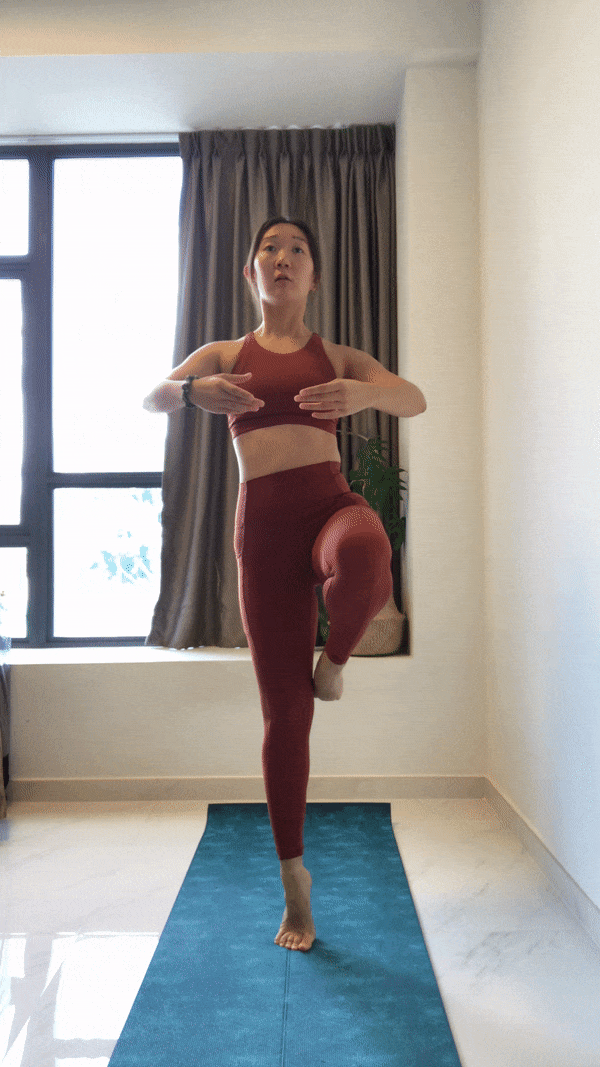In a previous post, I talked about building a workout routine focusing on compound exercises. Let’s review: compound exercises are exercises that work multiple muscle groups at once, or even the whole body in some cases. Compound exercises are particularly desirable to do for ballet dancers as ballet itself employs the entire body! Performing only isolation exercises can help dancers target specific weaker muscles, but focusing on compound exercises as a full body workout goes hand in hand with a dancer’s normal ballet class routine in the studio.
Here are 5 compound bodyweight exercises made specifically for dancers to improve ballet technique. These exercises can be a whole workout routine on its own as they hit all the muscle groups and contain both strength and conditioning elements. All you need to do is add your own warm up and cool down! Practice these exercises 3x a week for maximum results!
1. Squat Jumps
Let’s start my favorite dynamic exercise! I think squat jumps are the most well rounded exercise for dancers to improve not just jumps and plie for allegro, but also your stamina, foot pointe, body posture…
Squats are considered one of the “big three” lifts (the other two being bench press and deadlift) of powerlifting. These three lifts are so important in the world of strength training because they are enough to elicit results alone without need for any other types of exercises. That really says something about the importance of squats in your program!
Normal squats without the jump use the quads, hamstrings, glutes, but also back and core. But adding a jump as you come up from the squat position utilizes your calves and feet as well.
Think about a squat as a big second position grand plie, but the main difference is that you want to hinge your waist back instead of keeping your posture upright. Drive your weight backwards into your heels as you bend and think about sitting in a chair. From this position, use your glutes to explosively jump as high as you can into the air in a straight position. Your jump position in the air should look and feel ballet-like with the same posture, straight legs, and pointed toes. Land back into the squat position and repeat. Really think about utilizing your glutes and hips as you take off for your jump – squeeze your butt!
2. Single Leg Lunge with Releve
Let’s continue with another dynamic exercise in a similar vein as the squat. Single leg lunge will help improve strength and balance on one leg (think supporting leg) and work one side of the body at a time. Add in the releve to parallel retire passe after each lunge and now we have an exercise that will help train the body for pirouettes. You can also replace the releve with a jump instead to work on single leg jumps (temps leves).
If the squat jumps are basically big second position sautes, this exercise is essentially a big pirouette preparation in parallel. Step back one leg to a lunge; think fourth position preparation – even add the arms in! From here, lift the back knee up and forward into retire passe and come up onto releve. Get to releve retire passe as fast as you can and try to balance! Roll down on the supporting leg (like fondu) and return to the lunge position. Repeat and then change to the other side.
It is really important to control all aspects of this exercise, especially the landing back into the lunge to reset for another rep. Think about this part as landing from your pirouette – control the supporting leg rolling down from demi-pointe releve into fondu/plie and shoot the working leg from retire passe back to fourth position. Hold the core and back strong for a long balance and imagine yourself turning in a pirouette.
3. Up & Down Plank
Plank is by far the most useful exercise for dancers. It cannot be stressed enough how important the core is to dancing. The core is the stabilizer and our center of balance. It links your upper body to your lower body and holds your posture with your back. A strong core leads to a strong dancer. A correct plank position is actually quite difficult and if done correctly, holding a plank for extended periods of time is very exhausting.
Here is a variation of plank that will focus on the upper body. Ballet dancers generally don’t need to include so many arm and upper body exercises, but that doesn’t mean we can’t tone these muscles a little, especially since we do use upper body in ballet with our port de bras and epaulement. Up and down plank will help work the shoulders and arms, whilst also focusing on your core and glutes. Make sure not to slump in the shoulders in your plank – think about pushing the floor away when you hold your plank on your hands or on your elbows. Don’t forget to think about your core when moving up and down, try not to rock the hips side to side as you transition up and down. Hold your core steady so that your hips don’t sway.

4. Supermans
Supermans are a great exercise for elongating and lengthening the entire backside of the body – your rear delts, back, glutes, and hamstrings. The lower body of your supermans directly relates to your arabesque steps. The upper body of the supermans works the upper back – shoulder and lats – flexibility and strength for cambres and port de bras, especially fifth position port de bras. Do your supermans separately, upper body, then lower body, and then all together.
As you do your supermans, don’t think about the height of how high you can lift your body off the floor, but instead think about length. Reach your toes and fingers out horizonally to the walls as you lift off the floor versus “pushing up” to get higher off the floor. Keep the elbows wide in your fifth position arms so you can feel your rear delts squeezing together.. You can also try demi-second arms to really feel the shoulders pressing down. If you can, hold your upper body superman up and practice swan arms to feel your back controlling your port de bras.

5. Side Plank with Clamshell
Side plank is a very difficult pose to achieve, so we are going to do an easier variation but add an extra element to work our hips as well. Side plank works the obliques which are the abdominals that transverse all the way around both our sides. Obliques are very important for keeping our torso straight when dancing and for having a strong supporting side, not just a strong supporting leg. The clamshell aspect will activate our hip adductor – the muscle used to hold our turn out when dancing. I like to think about fondu or a retire passe when I do this exercise because there is a strong supporting side/leg whilst working the rotation of the working leg.
If you want to take this exercise to the ~next level~, tie a theraband around your knees to add resistance when you clamshell. This will help activate your hip adductor even more and locate that turn out muscle.

BONUS EXERCISE (but it’s really a stretch)
6. Lunge Twist Pose + Hamstring Stretch
For those that struggle with your splits or want to achieve your splits to improve your flexbility, then I highly recommend doing these two stretches before your try to pry your legs apart in your split. A front-back split is much more difficult to achieve than a middle split/straddle because different muscles are targetted in the stretch on each leg since the legs are extended in opposite directions. In a straddle, both legs are in the same position so the same muscles on each leg are being targetted in the stretch. In a front-back split, the hamstring is being stretched in the front leg, meanwhile the hip flexor and quad is being stretched in the back leg.
To progress in your split, I recommend stretching each muscle separately before sliding into your split. The most efficient way to do this is a lunge flow (like yoga!). First, come into a deep runner’s lunge to stretch out your back leg’s hip flexor. Lift up the same arm as the front leg into a triangle pose. This is a great twist position to open up the back. Come back to center and place the back leg knee down to deepen the stretch and get into the quad as well. Optional quad stretch: bend your back leg and grab your foot with the opposite hand. From here, shift your weight back and straighten the front leg for a hamstring stretch (you’re basically stretching the back leg of the split first and then the front leg). Finally, slide forward, keeping your front leg as straight as possible, into your split. If you can sit down in your split, lift your chest and try to hold your posture straight like you’re doing a grand jete or saut de chat leap!
TL;DR:
Compound exercises are the way to go for an effective full body workout akin to ballet class
Recommended Routine (reps x sets)
Warm Up
Squat Jumps | 8 x 3
Single Leg Lunge with Releve | 8 x 2 on each side with balance on the last rep
Up & Down Plank | 8 x 3
Supermans | 8 x 3 and hold the last rep for 10 counts
Side Plank with Clamshell | 8 x 2 on each side
Lunge Twist Pose, Hamstring Stretch, Full Split
Fit:
Top & Bottoms Set – Anya Active




Comments